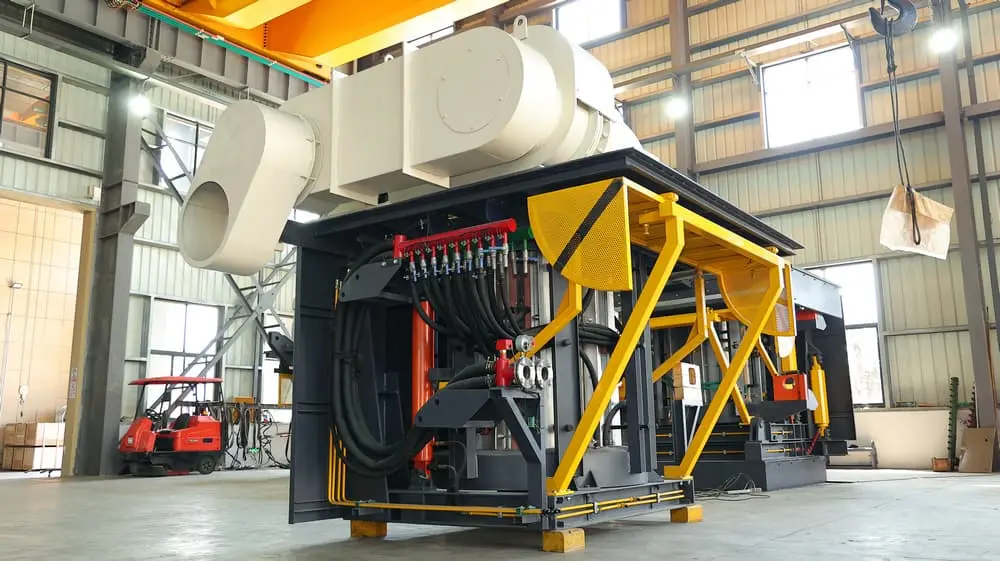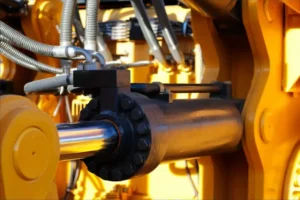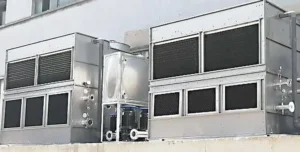
When selecting a furnace for melting copper and its alloys, the choice often comes down to three main options: medium-frequency induction furnaces, electric arc mga hurno (EAFs), at vacuum furnaces. Each has its strengths and ideal applications, but medium-frequency induction furnaces are frequently preferred for melting copper due to several distinct advantages.
Let’s explore why medium-frequency induction furnaces are often the best choice for copper melting, especially when compared to electric arc furnaces at vacuum furnaces.
1. Energy Efficiency and Cost-Effectiveness
- Medium-Frequency Induction Furnaces: These furnaces are highly energy-efficient. They directly heat the metal via electromagnetic induction, minimizing heat loss and maximizing the energy transferred to the copper. This direct heating mechanism makes induction furnaces more cost-effective in terms of both operational costs and energy consumption, especially in high-volume copper melting.
- Electric Arc Furnaces (EAFs): EAFs rely on an electric arc to melt the metal, which can be inefficient for non-ferrous metals like copper. The energy consumed by the arc, coupled with heat losses, means that EAFs can be more expensive to operate than induction furnaces for copper melting.
- Vacuum Furnaces: While vacuum furnaces are energy-efficient in terms of preventing oxidation and contamination, their operational costs are high. The need for vacuum pumps, heating elements, and specialized control systems make them far less economical for copper melting, particularly when compared to medium-frequency induction furnaces.
2. Faster and More Precise Melting
- Medium-Frequency Induction Furnaces: These furnaces offer fast, uniporme ng pag init, allowing copper to melt quickly and evenly. The direct heating process reduces the time required to reach the optimal molten state, increasing throughput and improving overall efficiency in large-scale operations.
- Electric Arc Furnaces (EAFs): EAFs generally take longer to melt copper. The electric arc can create uneven heating, potentially leading to hot spots and slower melt times. For copper, which requires careful temperature management, this can be a disadvantage.
- Vacuum Furnaces: Vacuum furnaces melt metals slowly due to the need to maintain a controlled atmosphere. This slow process is ideal for high-purity applications but impractical for large-scale copper melting, where faster production cycles are essential.
3. Enhanced Temperature Control and Metal Quality
- Medium-Frequency Induction Furnaces: Precision in temperature control is one of the standout features of induction furnaces. These furnaces provide consistent and even heating, preventing the risk of overheating, oxidation, and degradation of copper’s quality. This control is crucial, as copper can easily lose its properties when exposed to excessive heat or contamination.
- Electric Arc Furnaces (EAFs): The temperature control in EAFs is less precise. The electric arc can reach extreme temperatures, which may lead to oxidation or the formation of undesirable compounds in copper. As a result, EAFs are more suited for steel or other metals that are less sensitive to such factors.
- Vacuum Furnaces: Vacuum furnaces excel in maintaining a controlled environment, preventing oxidation and contamination, which is ideal for high-purity applications. Gayunpaman, their slower melt times and complexity make them overkill for general copper melting, where purity is not the only concern.
4. Contamination and Oxidation Control
- Medium-Frequency Induction Furnaces: Because induction furnaces use no combustion process, they minimize the risk of oxidation and contamination. Tanso, being highly sensitive to oxidation, benefits greatly from the clean, controlled atmosphere within the induction furnace. This makes them particularly effective when melting scrap copper or alloys.
- Electric Arc Furnaces (EAFs): EAFs are more prone to oxidation due to the open nature of the electric arc and the high temperatures involved. This is especially problematic for copper, which tends to form an oxide layer quickly when exposed to air at high temperatures.
- Vacuum Furnaces: The vacuum environment in these furnaces ensures minimal oxidation and contamination, making them ideal for high-purity copper applications. Gayunpaman, this comes at a high operational cost and is not necessary for most copper melting processes, especially when melting scrap copper.
5. Flexibility in Handling Scrap
- Medium-Frequency Induction Furnaces: Induction furnaces are particularly adaptable when melting various grades of scrap copper, including mixed or contaminated scrap. They require minimal adjustments to process different types of materials, making them ideal for recycling operations or foundries where feedstock can vary.
- Electric Arc Furnaces (EAFs): While EAFs are suitable for melting large quantities of scrap steel, they are not as well-suited for copper, especially mixed or contaminated scrap. The high temperatures and lack of precise control can lead to increased material losses and impurities in the final melt.
- Vacuum Furnaces: Vacuum furnaces are not designed for large-scale scrap melting and are typically reserved for high-purity applications, where the starting material is already of high quality.
6. Operational Costs and Maintenance
- Medium-Frequency Induction Furnaces: Induction furnaces are relatively low-maintenance and offer a cost-effective long-term solution. Their simple design and fewer moving parts reduce the risk of breakdowns and minimize maintenance costs.
- Electric Arc Furnaces (EAFs): EAFs require significant maintenance, particularly with the electrodes, which wear out over time. These additional maintenance requirements can make EAFs more expensive to operate, especially for non-ferrous metals like copper.
- Vacuum Furnaces: The complexity of vacuum furnaces, with their vacuum pumps, seals, and specialized components, results in higher operational and maintenance costs. For copper melting, these costs are often prohibitive when compared to induction furnaces.
Konklusyon: Why Medium-Frequency Induction Furnaces Are Preferred for Copper Melting
In summary, medium-frequency induction furnaces offer a highly efficient, cost-effective, and precise solution for melting copper and copper alloys. Their ability to provide fast, uniporme ng pag init, combined with excellent temperature control and reduced oxidation risks, makes them the optimal choice for most copper melting applications, especially in recycling and alloy production.
While electric arc mga hurno are more suited to large-scale steel production and vacuum furnaces are ideal for high-purity applications, medium-frequency induction furnaces provide the best balance of speed, cost, quality, and flexibility for copper processing. Their lower operational costs, faster melt times, and enhanced control over the melting process make them the furnace of choice for efficient copper melting.







